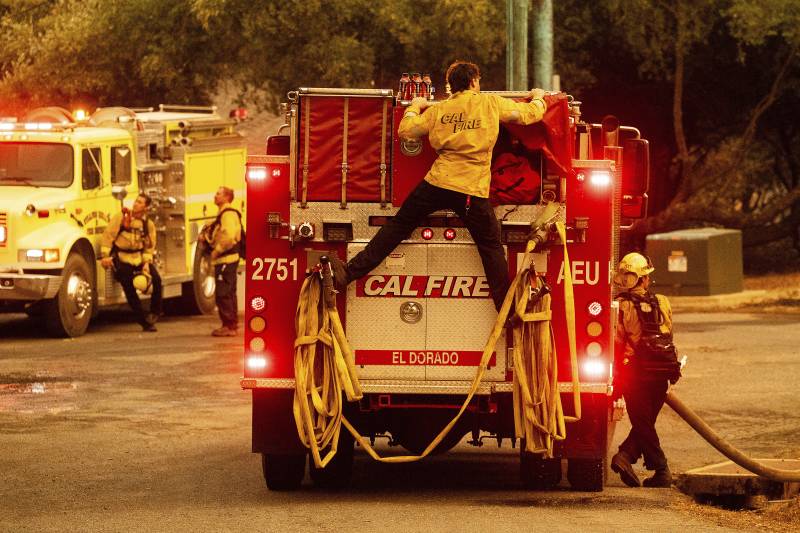Forecasts show the possibility of lightning strikes in the Sierra Nevada this weekend, which could ignite fires in dry fuel.
California’s Office of Emergency Services, meanwhile, has activated its emergency response plan for heat, opening cooling centers and enforcing safety protections for outdoor workers.
“Check in with coworkers if you work outside. Also, check in with older adults who might be isolated,” said Nancy Ward, director of Cal OES. “Stay hydrated and take frequent breaks. Find a cooling center in your community to cool down if necessary. Many communities are providing free transportation to these centers. Pack a to-go bag in case you have to be evacuated with the essential items for each of your members and also your pets. Learn multiple ways in and out of your neighborhood in case you are asked to evacuate.”
Ward also advised people to sign up for emergency alerts, which can be done at https://www.ready.gov/.
Newsom asked Californians to connect the dots between the frequency of weather-related disasters and their roots in human-caused climate change driven by burning fossil fuels.
“Hots are getting a lot hotter; we’re experiencing unprecedented record heat,” he said. “These heat domes over the entire western United States, over and over and over and over and over again. Record-breaking temperatures, record-breaking experiences. Not just in California, across this country and around the rest of the world.”
Taking a swipe at his critics and climate deniers, he added: “With respect to the troglodytes out there, climate change is real. Mother Nature, she bats last, bats a thousand. She’s chemistry, biology and physics. Those realities, those extremes are here, present every day in the great state of California.”
This year, the California Department of Forestry and Fire Protection has responded to more than 3,500 wildland fires that have burned more than 207,000 acres. That’s similar to the number of fires at this time last year but represents 197,000 more acres.
“In the last 24 hours across the state, there have been 44 new wildland fires,” said Tyler, the Cal Fire director.
Noting that 95% of all wildfires are started by human activity, Tyler offered some practical advice.
“I ask that you recognize that lawnmowers, weed eaters, chainsaws, grinders, welders, tractors, and trimmers can all spark wildfires if not properly maintained,” he said. “You need to make sure that the spark arrestors are clean and maintained when mowing. Mow before 10 in the morning, mow when the humidities are high, as it dries out throughout the day.”
As most fires start along roads, drivers have a large role to play in preventing them.
“And for our motorists on our roadways and our highways: Make sure that you are doing your part as well, and ensure that your chains are secure, that you’re removing dragging parts, carrying a fire extinguisher, and maintaining your braking systems,” Tyler said.
For more on how to prepare for wildfires, visit KQED’s guides on what to pack, what to do during an evacuation order, and how to protect yourself against smoke. To learn how to prepare for dangerous heat, visit this guide on the risks of heat-related illness and how to keep cool.
